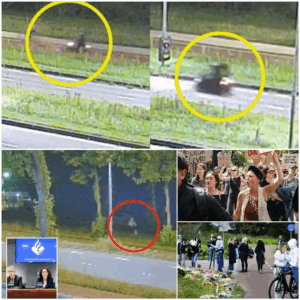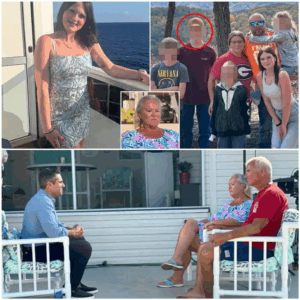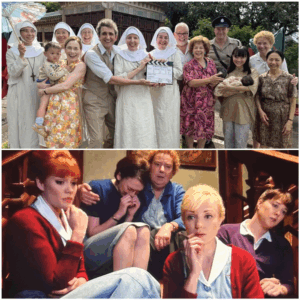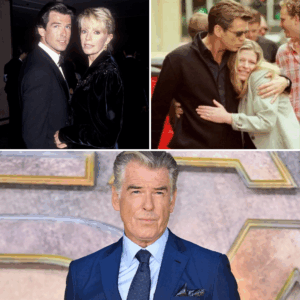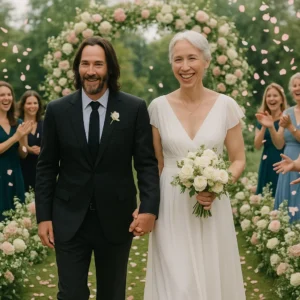In the high-stakes world of country music, where loyalty runs as deep as a steel guitar riff and change can feel like trading in your favorite boots for something untested, Keith Urban has always been the guy willing to crank the volume on reinvention. Just months before kicking off his electrifying High and Alive World Tour in May 2025, the New Zealand-born superstar dropped a bombshell that sent shockwaves through Nashville and beyond: after a quarter-century of shared spotlights, sold-out arenas, and countless encores, he was parting ways with his longtime bandleader and bassist Jerry Flowers, along with multi-instrumentalist Nathan Barlowe and another key player. “I’ve always followed the inner voice that says it’s time to make a change… and just take the leap,” Urban shared in a candid April 2025 interview, his voice carrying the gravelly conviction of a man who’s stared down demons before. What could have been a career-ending fracture instead became the spark that reignited Urban’s fire, transforming personal and professional heartbreak into a triumphant fresh start. This is the story of how one artist’s risky pivot not only refreshed his sound but reminded us all that sometimes, the best harmonies come after the hardest goodbyes.
To understand the magnitude of Urban’s decision, you have to rewind to the scrappy beginnings of a kid from Whangarei who traded sheep farms for sun-baked stages. Born in 1967 to a Scottish father and a New Zealander mother, Keith Urban was strumming chords on a pawn-shop guitar by age six, his fingers calloused from dreams bigger than the Outback. By his teens, he’d relocated to Australia, gigging in pubs and honky-tonks, honing a style that blended country twang with rock edge and pop polish. His big break came in the mid-1990s when he landed in Nashville, the mecca of Music Row, signing with Capitol Records in 1991 after a string of independent releases Down Under. Debut album Keith Urban in 1999 spawned hits like “It’s a Love Thing” and “Where the Blacktop Ends,” but it was 2002’s Golden Road that catapulted him to superstardom. Tracks like “Somebody Like You” and “Who Wouldn’t Wanna Be Me” didn’t just climb charts—they defined a generation’s soundtrack for cruising backroads and falling hard.
Urban’s rise wasn’t without turbulence. The early 2000s brought battles with addiction that nearly derailed him; a 2006 rehab stint made headlines, testing his marriage to actress Nicole Kidman and his standing in an industry that chews up vulnerability. Yet, like the resilient anthems he pens, Urban emerged stronger, channeling pain into platinum records. Albums like Be Here (2004), Defying Gravity (2009), and Fuse (2013) showcased his evolution, fusing traditional country with electronic flourishes and soulful ballads. By the 2010s, he was a Grammy magnet—four wins and counting—headlining festivals from CMA Fest to Glastonbury, and collaborating with icons like Carrie Underwood and Taylor Swift. His live shows became legendary: high-energy spectacles where he’d leap across stages, trading solos with his band like old friends passing a bottle around a campfire.

Enter Jerry Flowers, the unsung architect of those magic nights. A Nashville native with a grin as wide as the Cumberland River, Flowers joined Urban’s camp in the late 1990s, right as the band was coalescing into a tight-knit family. Over 25 years, he wasn’t just the bassist—he was the heartbeat. Slung low on his Fender Precision, Flowers anchored Urban’s wild fretwork, providing the thumping groove that let Keith soar on leads from “Sweet Thing” to “Blue Ain’t Your Color.” As bandleader, he orchestrated the chaos of 20-plus musicians, ensuring seamless transitions from acoustic storytelling to pyrotechnic jams. Fans knew him as the guy in the cowboy hat, hyping crowds with air guitar antics or joining Urban for impromptu duets on covers like Lynyrd Skynyrd’s “Sweet Home Alabama.”
Flowers’ talents extended far beyond the stage. A prolific songwriter, he co-penned Urban staples like “Straight Line,” a raw confessional about redemption that became a fan-favorite opener. His credits spilled into other artists’ catalogs: Jason Aldean’s summery “A Little More Summertime,” Sam Hunt’s party-starter “House Party,” and Billy Currington’s sultry “Do I Make You Wanna.” In interviews, Flowers often credited Urban for giving him wings, recounting late-night writing sessions in tour buses where ideas flowed like whiskey. “Keith’s the spark,” he’d say. “I’m just the steady hand keeping the fire from burning out.” Their bond was brotherly—shared tattoos, inside jokes, and a mutual love for hot rods and hotter riffs. Nathan Barlowe, who hopped aboard around 2016, brought a modern twist. A tech-savvy innovator, he invented “The Phantom,” a custom rig of iPads and software that layered live loops from Urban’s albums, adding ethereal textures to songs like “The Fighter.” For nine years, Barlowe was the band’s mad scientist, turning performances into immersive experiences that blurred the line between concert and cyber-country rave.
So when Flowers posted that Instagram message on January 10, 2025—”It’s with a heavy but very full heart that after 25 years on stage with Keith Urban, Keith has decided to make a lineup change and I will no longer be in the band”—it landed like a missed chord in a flawless solo. Barlowe followed suit hours later: “Sadly my time with Keith Urban has come to an end. I can’t tell you how thankful I am for the last nine years. I have loved every second of it and given my all.” No drama, no blame—just gratitude laced with quiet ache. The third departure, drummer Peter Clarke, slipped under the radar but echoed the theme: a respectful fade-out after decades of pounding the beat.
The internet erupted. Fans, many who’d grown up on Urban’s music, flooded social media with heartbreak emojis and pleas. “Jerry, you ARE the band,” one wrote under Flowers’ post, racking up thousands of likes. “This feels like losing a family member at the show.” Industry peers chimed in too—Jason Aldean’s bassist Tully Kennedy called it a “massive loss,” tweeting, “Jerry’s the real deal. Nashville won’t sound the same without him grooving.” Forums buzzed with theories: burnout from endless tours? Creative differences post-High, Urban’s September 2024 album that leaned heavier into introspective rock-country hybrids? Or simply the grind of two decades on the road catching up? Whatever the spark, the shake-up felt seismic in a genre that prizes stability like a well-worn Stetson.
Urban stayed radio silent at first, letting the dust settle as he prepped for the tour. But by April, with tickets going on sale, he opened up in a Rolling Stone sit-down, framing the split not as severance but salvation. “Look, these guys are my brothers—blood, sweat, and all,” he said, eyes misty under the studio lights. “Jerry’s been there through my darkest days, pulling me up when I couldn’t stand. But after 25 years, that inner voice started whispering: evolve or evaporate. The music’s calling for something raw, unfiltered. Heartbreak? Sure, it stings like hell. But I’ve turned worse into gold before.” He alluded to his own history—addiction’s shadow, the 2018 divorce scare with Kidman that tested their 18-year marriage—positioning the band change as therapy. “It’s like shedding skin. Painful, but you emerge sharper, alive.”
That aliveness pulses through the High and Alive World Tour, a 50-date juggernaut spanning North America, Europe, and Australia from May to December 2025. Kicking off at Nashville’s Bridgestone Arena—poetic, given the hometown roots—it promises a “reimagined” spectacle: larger-than-life visuals synced to High‘s tracks like “Messed Up As Me” and “Wild Hearts,” with drone light shows and interactive fan zones. The setlist, clocking in at two hours of pure adrenaline, weaves classics with fresh cuts. It opens with “Straight Line,” Flowers’ co-write now a meta nod to reinvention, barreling into “Where the Blacktop Ends” for that nostalgic kick. Mid-show peaks with “Long Hot Summer” and “John Cougar, John Deere, John 3:16,” where Urban’s new band—featuring rising shredder Tommy Pfeiffer on guitar and a horn section for soulful swells—matches the old guard’s fire. “Cop Car” and “Somewhere in My Car” get stripped-down treatments, spotlights on Urban’s vocals, while encores explode with “The Fighter” (sans Phantom, but amplified by live strings) and a cover of John Mellencamp’s “Jack and Diane” that had Vancouver’s Rogers Arena chanting on September 10.
Early reviews rave about the shift. At the tour’s Toronto opener in June, Billboard noted Urban’s “ferocious energy,” like a man unchained. “The stage feels lighter, the risks bolder,” one critic wrote. Fans, initially wary, have warmed: sold-out crowds in Dallas and Denver report goosebumps from extended jams on “Better Life,” with Urban pausing mid-song to honor his ex-bandmates. “This one’s for Jerry—hold it down, brother,” he ad-libbed in Chicago, drawing roars and a few misty eyes. Backstage tales leak out: Urban gifting Flowers a custom bass etched with tour dates, the pair sharing a quiet beer post-show. Barlowe, now tinkering in a Nashville studio, teased Phantom 2.0 on social media, hinting at future collabs.
For Flowers, the exit’s been a launchpad. By February 2025, he was podcasting about “The Hits, The Hustle & What’s Next,” dishing on co-writing Aldean smashes and eyeing solo ventures. “Keith gave me the world,” he told The Zak Kuhn Show. “Now I’m building mine.” Barlowe, ever the innovator, launched workshops on live tech, crediting Urban for his edge. Their departures underscore country’s fluid underbelly—where bands aren’t just backups but co-conspirators—yet Urban’s gamble pays off. Album sales for High spiked 30% post-announcement, and tour gross projections hit $100 million, rivaling his 2018 peak.
At 58, Urban’s no stranger to phoenix moments. From battling substances to balancing fatherhood with Sunday Rose and Faith Margaret, he’s woven life’s fractures into art. This band breakup? It’s the latest thread in a tapestry of resilience. As he told a Sydney crowd in August, strumming under harbor lights: “Change isn’t the end—it’s the bridge to alive.” With the High and Alive run winding toward a December finale in Brisbane—full circle to his roots—Urban’s proving that heartbreak, when harnessed, hits harder than any power chord. Fans aren’t just buying tickets; they’re witnessing a legend leap, landing on stages that feel newborn. In a world of remixes and reboots, Keith Urban’s reminder rings true: the boldest stories start with a goodbye.
